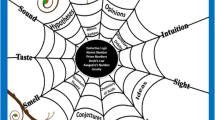Abstract
This paper proposes an approach to diagnostic reasoning with the following distinct features: 1 A diagnostic system is formulated in FOL with equality, particularly in the form of program clauses; 2 The abnormality of system components is determined in terms of either experiential knowledge of domain experts or behavioral description of components; 3 Heuristics is fully used not only to assist in judging the abnormality of system components, but also to guide the diagnosis; 4 A unique diagnosis will be computed for a given observation, provided that certain essential I-O information is supplemented when demanded.
Similar content being viewed by others
References
Bobrow D G. (ed.). Special volume on qualitative reasoning about physical systems.Artificial Intelligence, 1984, 24.
Williams B C, de Kleer J. (eds.) Special volume on qualitative reasoning about physical systems II.Artificial Intelligence, 1991, 51.
de Kleer J, Williams B C. Diagnosing multiple faults.Artificial Intelligence, 1987, 32: 97–130.
Davis R. Diagnostic reasoning based on structure and behavior.Artificial Intelligence, 1984, 24: 347–410.
Genesereth M R. The use of design descriptions in automated diagnosis.Artificial Intelligence, 1984, 24: 411–436.
Reiter R. A theory of diagnosis from first principles.Artificial Intelligence, 1987, 32: 57–95.
Shortliffe E H. MYCIN: Computer-based medical consultation. American Elsevier. New York, 1976.
Reggia J A, Peng Y. Modelling diagnostic reasoning: A summary of parsimonious covering theory. InProc. Int’l. Conference on Computer Applications in Medical Care, Washington, D.C., 1986.
Greiner R, Smith B A, Wilkerson R W. A correction to the algorithm in Reiter’s theory of diagnosis.Artificial Intelligence, 1989/90, 41: 79–88.
Gelfond M, Lifschitz V. Classical negation in logic programs and disjunctive database.New Generation Computing, 1991, 9: 365–385.
Shepherdson J C. SLDNF—resolution with equality.J. of Automated Reasoning, 1992, 8: 297–306.
Author information
Authors and Affiliations
Additional information
This research is supported by the National Natural Science Foundation of China.
Shen Yidong, Ph.D., is a Professor of Computer Science at Chongqing University, China. His present research interests include artificial intelligence, deductive/object-oriented/heterogeneous databases, logic programming and parallel processing.
Rong Mei is a Doctor of Computer Science at Chongqing University, China. Her present research interests include artificial intelligence, qualitative reasoning, deductive databases.
Tong Fu is a Professor of Computer Science at Shanghai University of Science and Technology. His present research interests include artificial intelligence, engineering deductive databases, CIMS and distributed systems.
Rights and permissions
About this article
Cite this article
Shen, Y., Rong, M. & Tong, F. Diagnostic problem solving using first principles and heuristics. J. of Comput. Sci. & Technol. 11, 372–384 (1996). https://doi.org/10.1007/BF02948481
Received:
Revised:
Issue Date:
DOI: https://doi.org/10.1007/BF02948481




